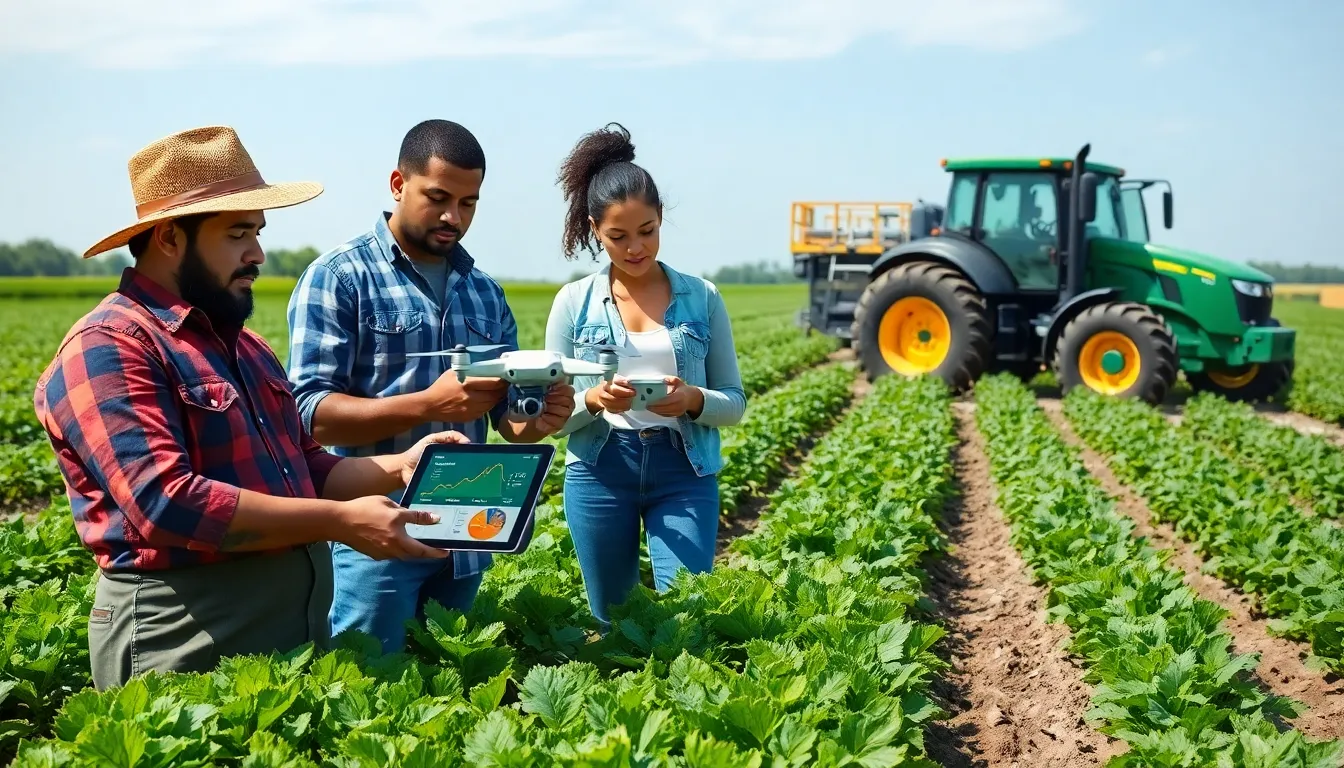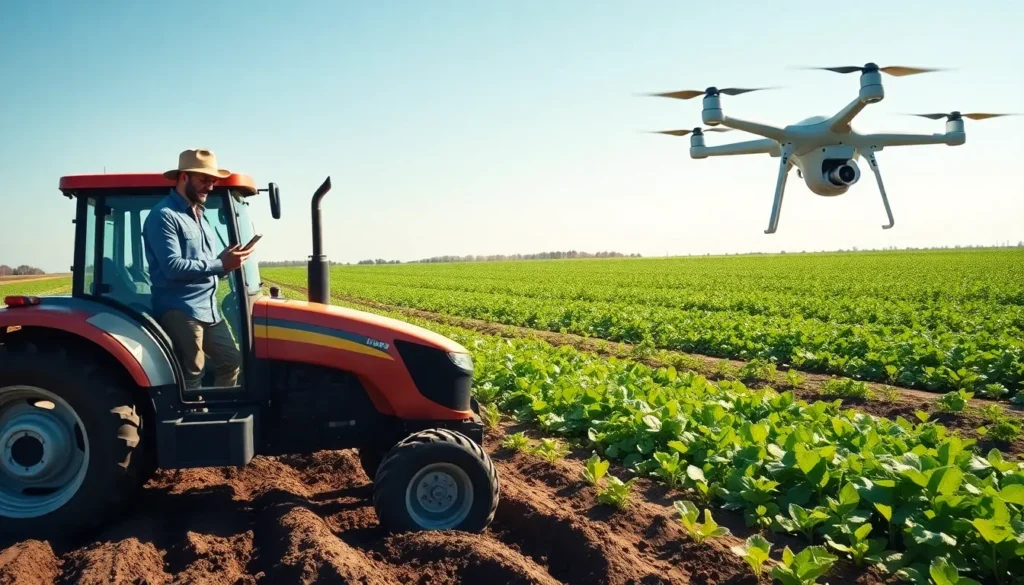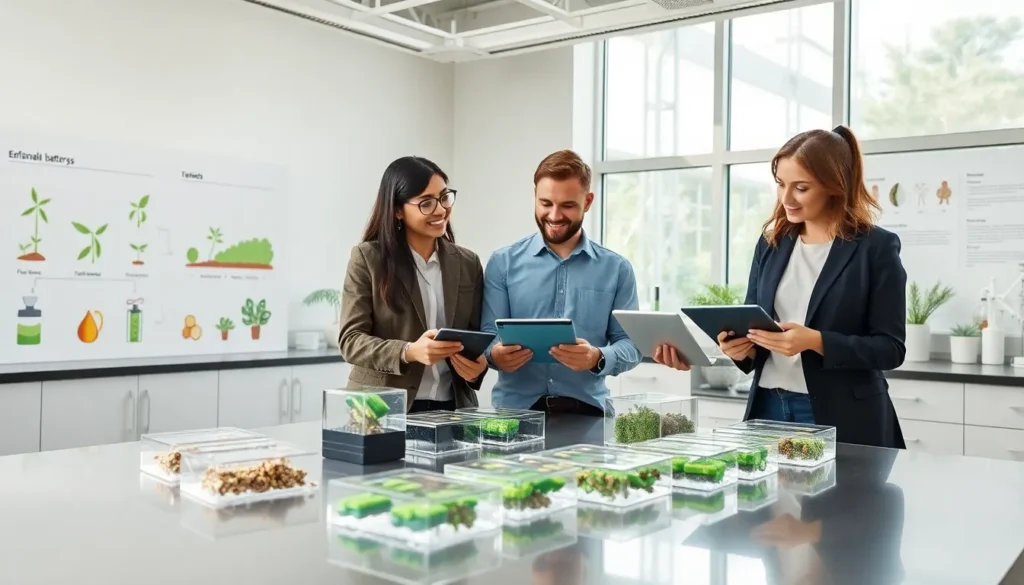Table of Contents
ToggleImagine a farm where robots do the plowing, drones scout for pests, and data analytics forecast crop yields better than your favorite weather app. Welcome to the dynamic world of agriculture, where emerging technologies are reshaping how food is grown, harvested, and distributed. In an era where efficiency is king, these innovations are not just handy gadgets, they’re the future of how we will feed the rising global population. Buckle up as we jump into the green revolution of the 21st century.
The Role of Technology in Modern Agriculture

Technology has become an integral part of agriculture, driving efficiency and productivity like never before. The agricultural sector is witnessing an unprecedented transformation, influenced by advancements in various fields. From planting to harvesting, every aspect of farming has been enhanced through technology. Farmers no longer rely solely on traditional methods: instead, they leverage tools like software, sensors, and machines that optimize every step of the farming process.
The importance of technology isn’t just about boosting crop yields: it’s about sustainability and reducing environmental impacts. With the world facing extensive climate challenges, modern agriculture must adapt, and technology provides the answers. For instance, sensors and IoT devices monitor soil health in real time, enabling farmers to use resources more efficiently. As a result, they can produce food while minimizing water usage and fertilizer runoff, creating a win-win situation for both the farmer and the environment.
Precision Agriculture: Enhancing Efficiency
Precision agriculture is a groundbreaking approach designed to maximize farm productivity and minimize waste. By utilizing various technologies, farmers can target specific areas of their fields with tailored treatments, significantly improving overall efficiency. These advanced techniques encompass GPS technology, soil mapping, and yield monitoring, which together allow for accurate data collection and application.
For example, farmers can use GPS-enabled tractors to plant seeds at optimal depths and spacing, ensuring every seed has the best chance to grow. Also, drones equipped with imaging technology can identify areas needing attention, such as underperforming crops or weed outbreaks. This targeted intervention not only reduces labor costs but also enhances sustainability, leading to healthier ecosystems.
Biotechnology: Revolutionizing Crop Production
Biotechnology is at the forefront of agricultural innovation, revolutionizing how crops are developed and produced. Genetic engineering allows scientists to modify plants to enhance desirable traits such as drought resistance, pest resilience, and improved nutritional profiles. This process has led to the creation of genetically modified organisms (GMOs) that contribute significantly to food security.
For instance, researchers have developed crops that can withstand harsher climate conditions, reducing dependence on chemical pesticides and fertilizers. Also, bioengineered foods can be enriched with vitamins and minerals, combating nutritional deficiencies in vulnerable populations. As consumer demand for sustainable and health-conscious options rises, biotechnology holds the potential to meet these needs while ensuring agricultural viability.
Drones and UAVs: Aerial Innovations
The use of drones and unmanned aerial vehicles (UAVs) is revolutionizing agricultural practices. These flying machines offer farmers unparalleled insights into their fields, providing high-resolution imagery and data collection that was previously difficult, if not impossible, to obtain.
Drones are invaluable for crop monitoring, allowing farmers to assess plant health and growth progress from above. They can detect irrigation issues, identify pest infestations, and even assist in crop spraying with pinpoint accuracy. This aerial perspective reduces the time and labor required for inspections while increasing overall farm efficiency. Also, drones can help optimize resource application, ensuring that fertilizers and pesticides are used judiciously, so promoting a more sustainable farming model.
AI and Data Analytics: Smart Farming Solutions
Artificial intelligence (AI) and data analytics are paving the way for smarter farming solutions that enhance decision-making processes across the agricultural landscape. With the capacity to analyze vast amounts of data, these technologies empower farmers to make informed choices that can significantly impact their yield and profit margins.
AI-driven tools analyze weather patterns, soil conditions, and historical data to predict outcomes and suggest optimal planting strategies. Farmers can use these insights to plan better crop rotations, manage resources effectively, and assess market trends. For instance, machine learning algorithms can analyze past crop performances and adapt planting schedules, ensuring that farmers can react proactively to changing environmental conditions.
Sustainable Practices: Technologies for a Greener Future
Sustainable agriculture is imperative in our quest for a greener future, and emerging technologies are at the core of this movement. As agriculturists face the challenges of climate change, innovative practices are essential to create a balance between productivity and environmental stewardship.
Technological advances in sustainable farming include renewable energy sources, precision irrigation systems, and agroecological practices. For instance, solar-powered irrigation systems help reduce reliance on fossil fuels while ensuring that crops receive the water they need. Also, regenerative agricultural practices, which prioritize soil health and biodiversity, are enhanced through technology that monitors soil nutrients and microbial activity. By adopting these techniques, farmers can produce food responsibly, ensuring that future generations inherit a thriving planet.




